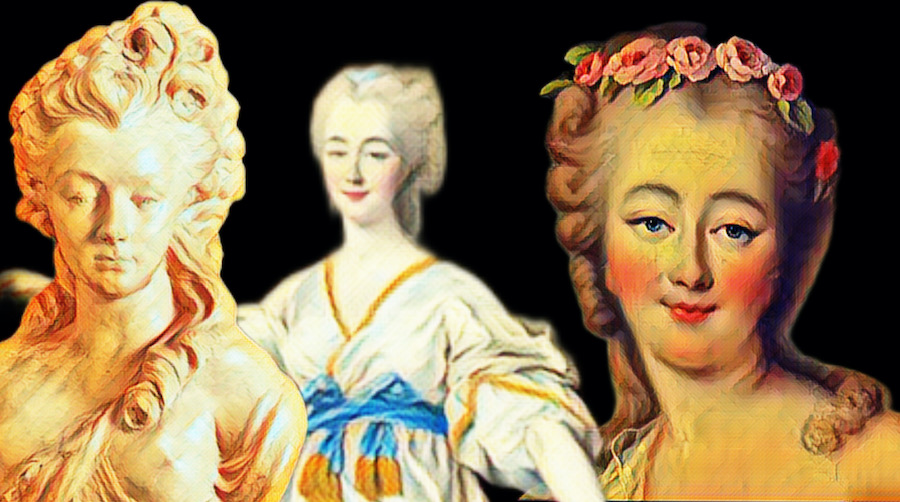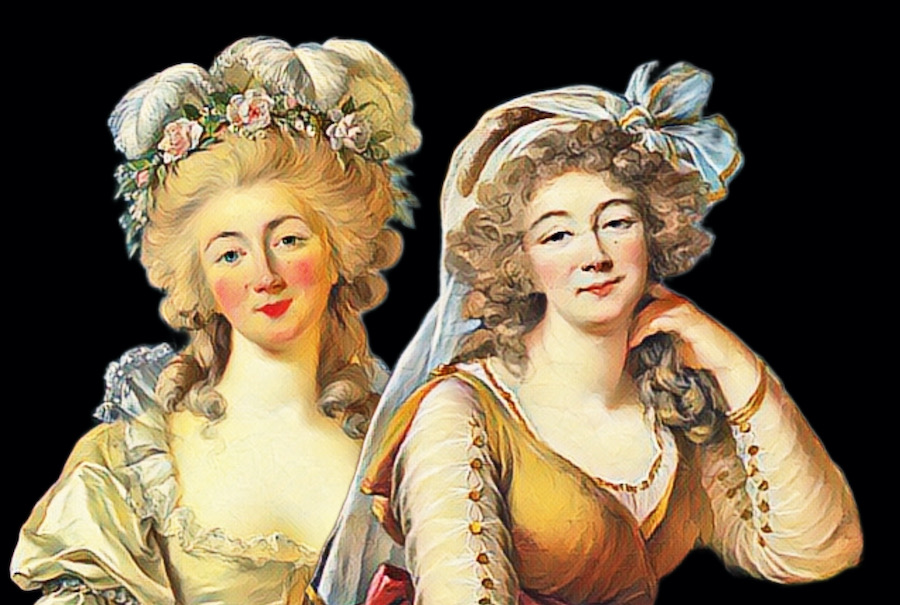“Encore un moment, monsieur le bourreau, un petit moment!” “Wait a moment, Mr. Executioner, just a moment more!”
The last words of Marie-Jeanne Bécu, or Madame du Barry, spoken 230 years ago, are as tragic as her life. At the age of 50, still beautiful and rich, she had ‘escaped’ the fury of French revolutionaries who hated the monarchy and, in particular, a common foe, Queen Marie Antoinette. But Jeanne, disconnected from reality like many rich people, put herself at risk and paid with her life. Her death on the guillotine would have been avoided if she had been discreet, after all, the ex-lover of King Louis XV came from the people and nobody remembered her at that time. As a matter of fact, until today its history, in general, is a page quoted quickly in the trajectories of nobles, having been the protagonist of few productions. One of them hits European theaters in 2023, the film Jeanne du Barry, directed by and starring Maïwenn and Johnny Depp, which will open the Cannes Film Festival.
The Countess du Barry has a fascinating story and her rise and fall, from her days as just a young working girl eager for culture and pleasure, to her rise to prominence as the King’s favorite at Versailles. In general, these days are remembered from the point of view of her detractors: she is always portrayed as a street “whore” who arrived at Court and conquered the old monarch with her beauty, youth, and sexual knowledge. But Jeanne was an intelligent, ambitious, and fascinating woman, who helped the King to regain joy in the last years of his life. They lived a great love story (some claim that they even got married in secret), but because she came from a poor background, she never got over the scandal of that union. A tragic irony is that Jeanne’s fate was the same as that of the people who never forgave her for being one of the people. We will get there.
Marie-Jeanne Bécu was born illegitimately from an affair between a cook and seamstress, Anne Bécu, and an unknown man (they suspect he was a friar, Jean-Baptiste Gormand de Vaubernier). A lover of her mother arranged for the girl to have an education, in a convent, something that was only for families who had some possessions, which was not her case.
Beautiful, Jeanne was under the protection of the nuns until she turned 15, when with the name Jeanne Rançon, she started working to support herself, as an apprentice hairdresser, chambermaid for a wealthy family, and even a saleswoman at an elegant store, La Toilette. They believe this is how he learned about nobility etiquette and culture. Other historians claim that Jeanne worked in brothels, which is where she created her connections with the French High Court. Somehow, still, at the age of 20, it was accompanying one of her lovers, Marshal de Richelieu, on a visit to Versailles, that Jeanne was seen by King Louis XV, changing the course of History.
The 58-year-old monarch at the time, recently widowed and mourning the death of his favorite lover for years, Madame du Pompadour, was immediately enchanted with Jeanne, which made the noble Jean-Baptiste du Barry, a confessed libertine, also interested. Conspirator (and pimp, according to biographers), he understood that the young woman would create political opportunities and got involved with her, introducing her to the Arts and a world of luxury. Jeanne’s plebeian origin, as well as her activity as a sex worker, were obstacles to her reaching an intimate circle of Louis XV, so the alternative was to marry her as soon as possible so that she would have a title, in fact, an alibi. The chosen one was Jean-Baptiste’s brother, Count Guillaume du Barry, who had possessions but no political influence. As Countess du Barry, Jeanne was officially introduced to the King, who fell head over heels in love with her at once. In 1769 she was included with pomp and circumstance in the Court, generating scandal, envy, and animosity.

Although some biographers claim that Jeanne’s interest in Louis XV did not involve politics, the men who manipulated her used her to influence the King and achieve their goals. One of them was to obtain the resignation of the Duc de Choiseul, Minister of Foreign Affairs. In any case, the Royal Family rejected her, especially the young Marie Antoinette, who refused to speak to Jeanne. As by etiquette, the Countess could not address the Princess before her, an impasse was created in which the King himself would have had to intercede. After much reluctance, the future Queen gave in, on one occasion shown in Sofia Coppola‘s film very faithful to the fact. Another known historical fact was the highly valuable jewelry he was given as a gift, including the infamous diamond necklace, valued at around $14 million today, that was at the center of the Diamond Necklace Affair. To remind you, in 1772, Louis XV commissioned a necklace for Jeanne so extravagant that he died before it was finished (or paid for). The piece was left without an owner until the coup artist Jeanne de Valois-Saint-Remy convinced the Cardinal that Marie Antoinette coveted the necklace (a lie as the Queen would never keep anything made especially for Du Barry) and threw the monarch’s name in a scandal that worsened her reputation. This is a story that deserves a separate post. The fact is that the exaggeration of everything that surrounded Madame Du Barry reflects how much she was adored by Louis XV, how she was the target of unbridled luxury and a lot of gossips.
So much so that, in general, Jeanne was always portrayed as a vulgar woman, without manners or disguise of her origin. Teda Bara, the sex symbol of silent cinema, played her in the 1917 film, and Pola Negri, in 1919, reinforcing the sexualized legend about her trajectory, also with Dolores Del Rio in the 1934 film. was questioned, even though others have made the same choice as a way of life.
Installed on the second floor of the Palace of Versailles in sumptuous 35m2 apartments, Jeanne lived surrounded by luxuries and with direct access to the king’s apartments, just below hers, on the first floor. As maitresse-en-titre, she was the most powerful woman in France. However, when Louis XV became ill and died in 1774, everything changed. She was expelled from her chambers and forced to retire from court. The first two years were spent at the Convent of Pont-au-Dames, but then he lived in comfort and luxury at the Chateau de Louveciennes, without bothering anyone directly. As a patron of the arts and artisans, she was a friend of Voltaire, commissioned Jean-Honoré Fragonard to paint several works for her, and supported new movements and ideas in the arts. Then came the French Revolution in 1789.

The first years, known as the Reign of Terror, only judged people by their possessions and recent past, so Jeanne’s plebeian origin was “forgotten”, with her title of Countess and her life with the King as the main reference. Still, as he was far from Versailles and was disaffected by the hated Marie Antoinette, Jeanne was left aside. Until Du Barry herself made a series of mistakes.
In 1791, Jeanne was robbed and failed to realize that she would gain more by keeping quiet about her possessions than by calling for justice. They were diamonds and she made such a fuss that it caught the attention of many, not least because she promised generous rewards to recover her possessions and ended up boasting about her immense fortune. The jewels were located in London, where she managed to escape and where she was safe and well-received. However, suddenly, she decided to return to France, even though she was strongly warned and advised never to set foot in Paris, after all, she was a noble by marriage and a former lover of the King, she would be an immediate and easy target for the Guillotine. Stubborn, she defied luck. And lost.
Madame Du Barry was arrested in 1793 and thrown into prison. Taken to trial, she was accused of treason and quickly sentenced to death. She begged for mercy, and handed over several names that were against the New Regime, but was taken to execution in a common wagon, with other accused. Few remembered that she herself was a woman of the people. She was executed just two months after Marie Antoinette and her body was dumped in a mass grave.
This tragic story promises to gain a new narrative in Maïwenn’s view. With the distance of 230 years, we will possibly have a less judged Jeanne, but, unfortunately, equally tragic. A woman who managed to overcome all obstacles, except the judgment of society.

4 comentários Adicione o seu